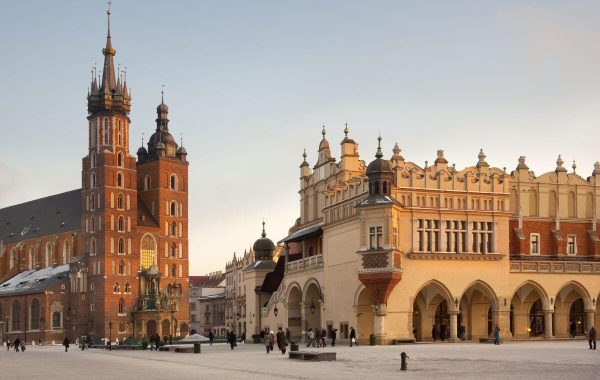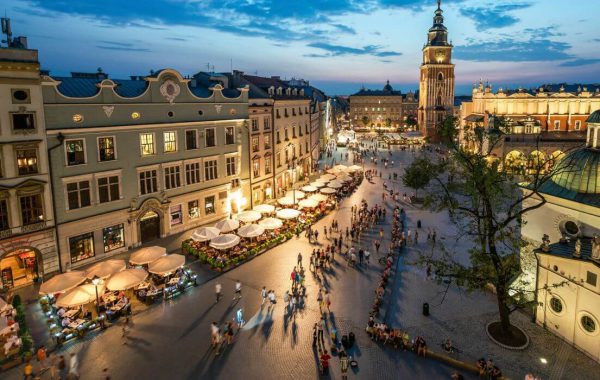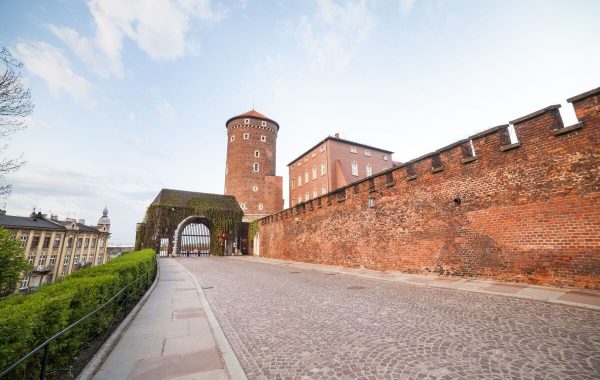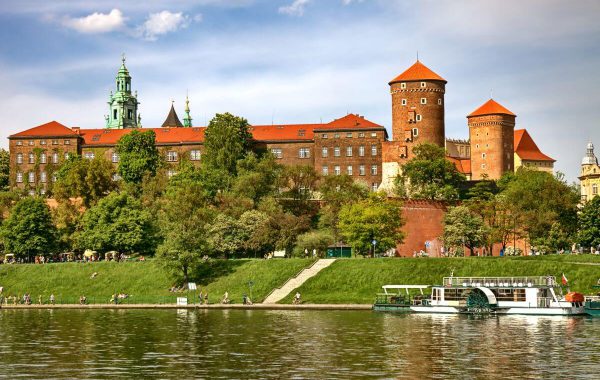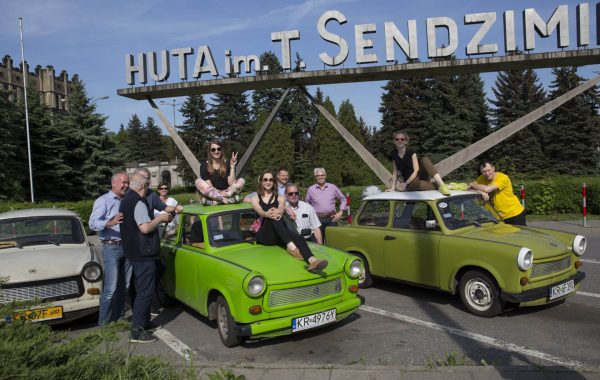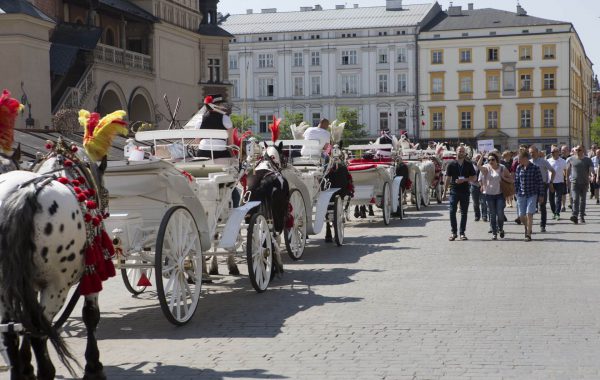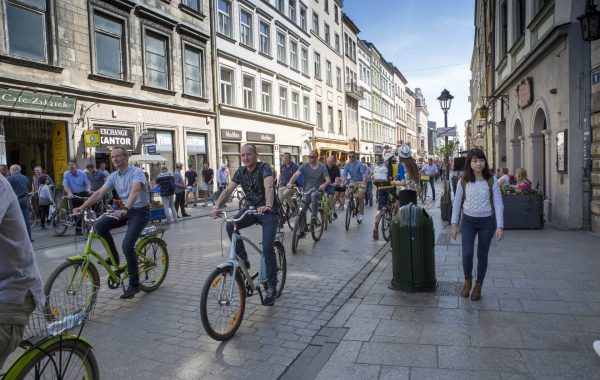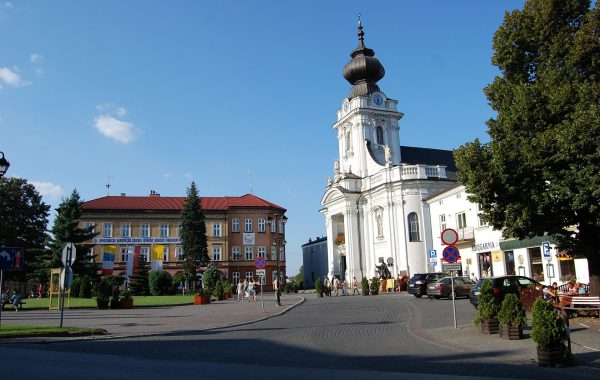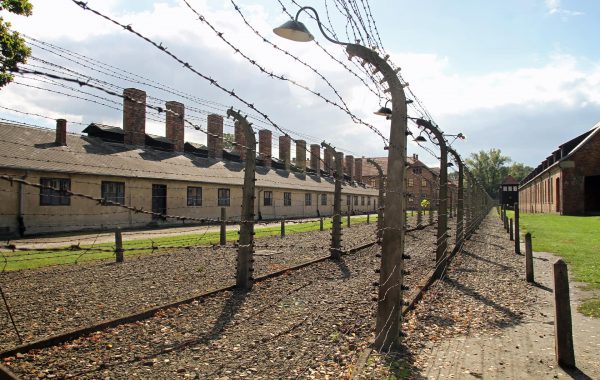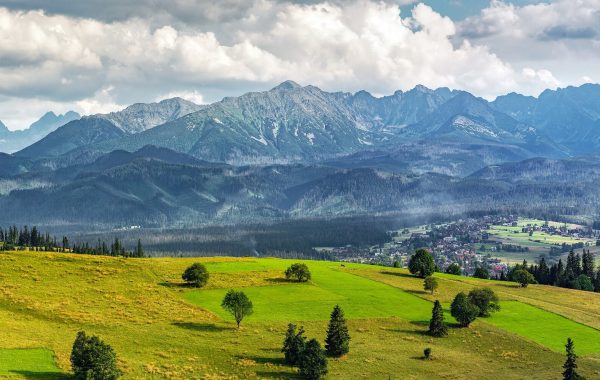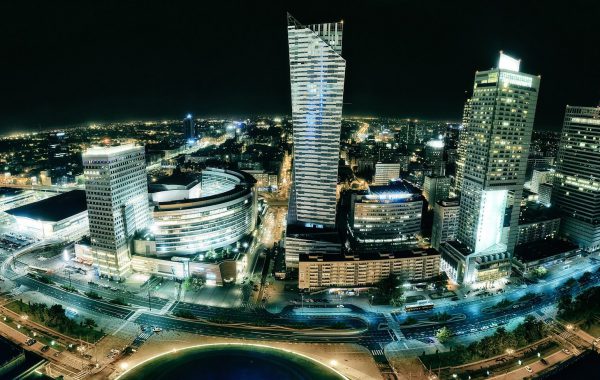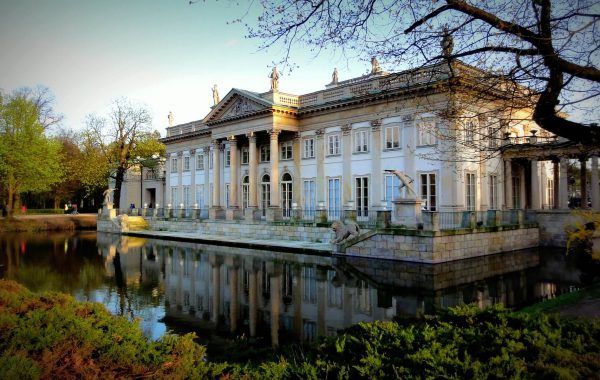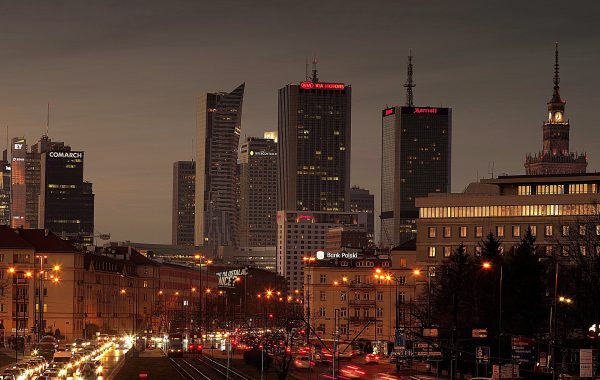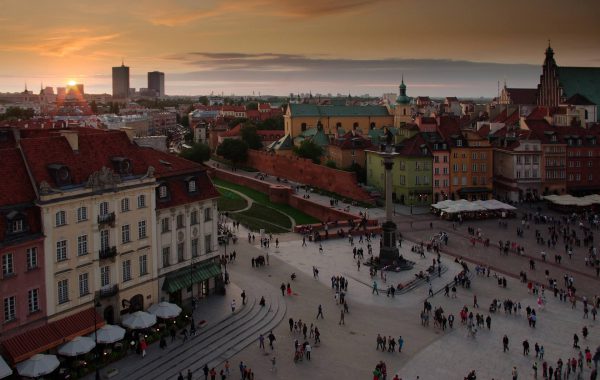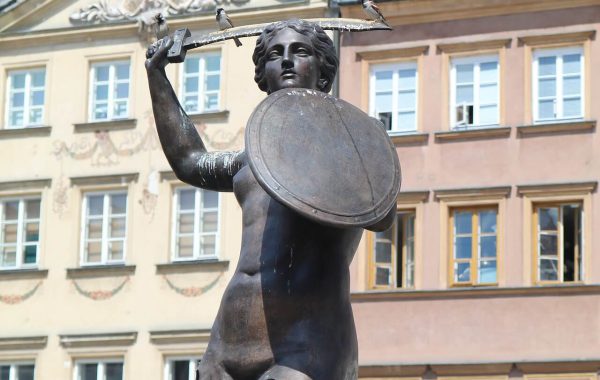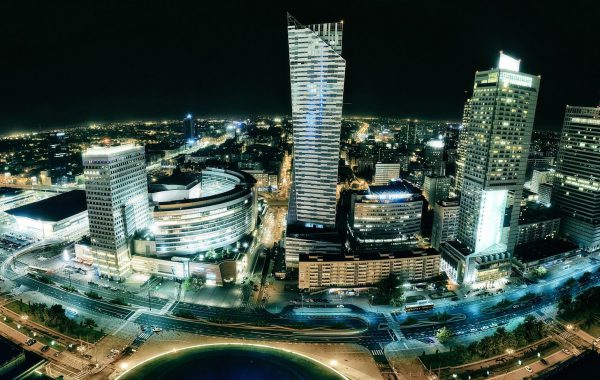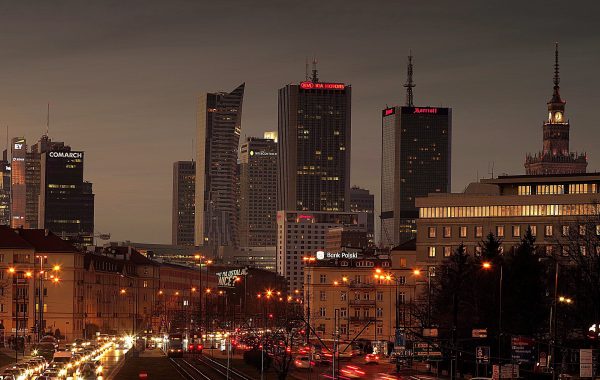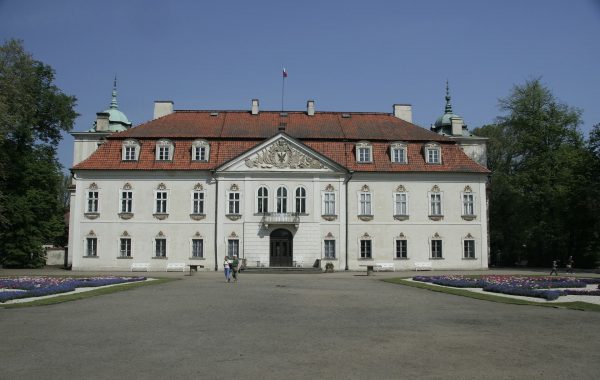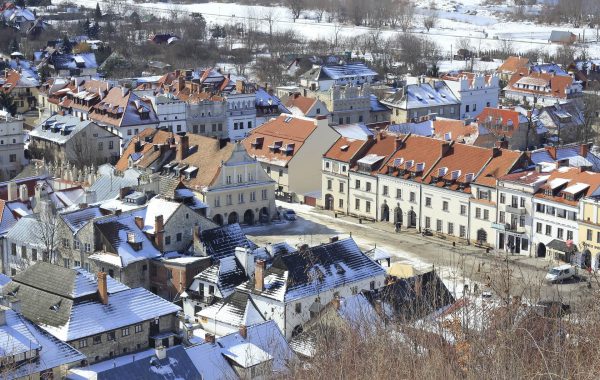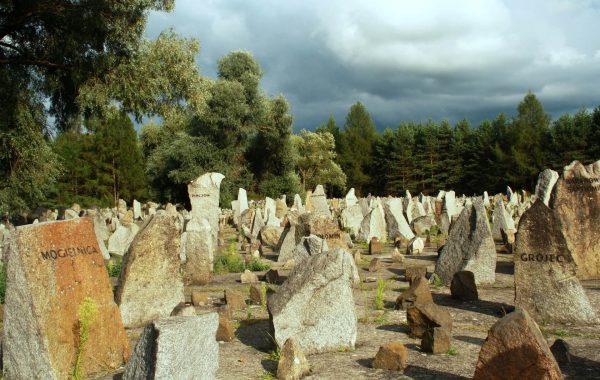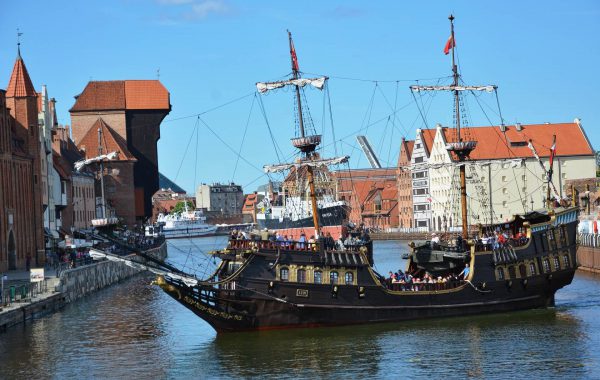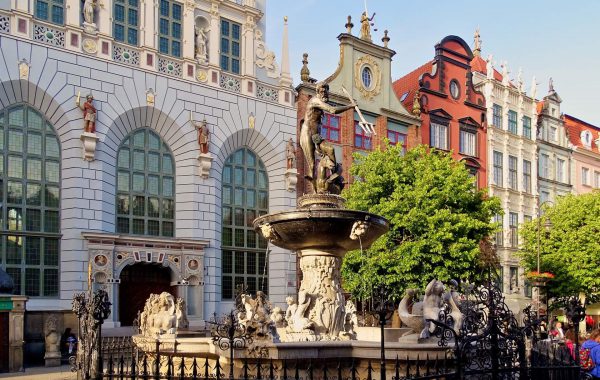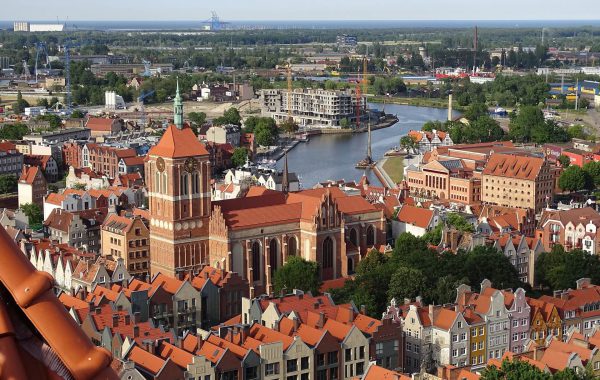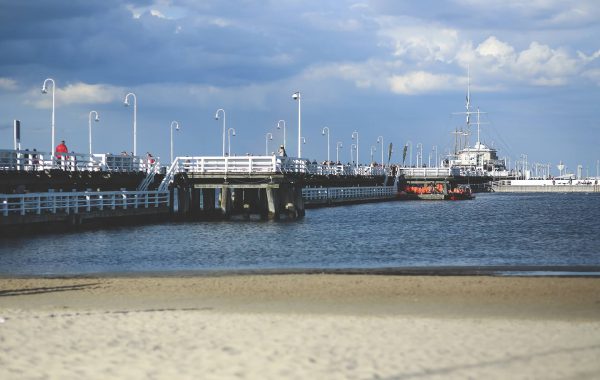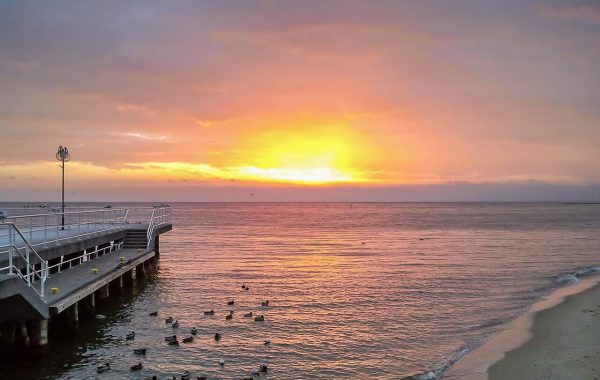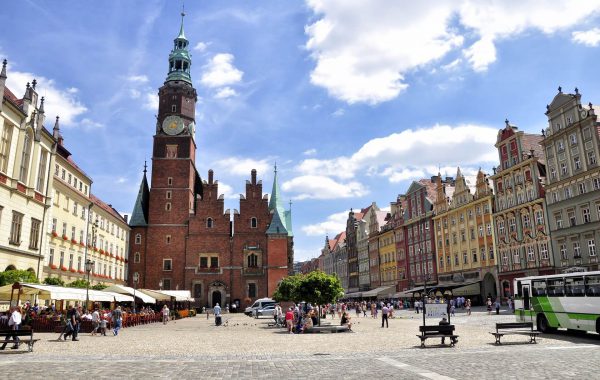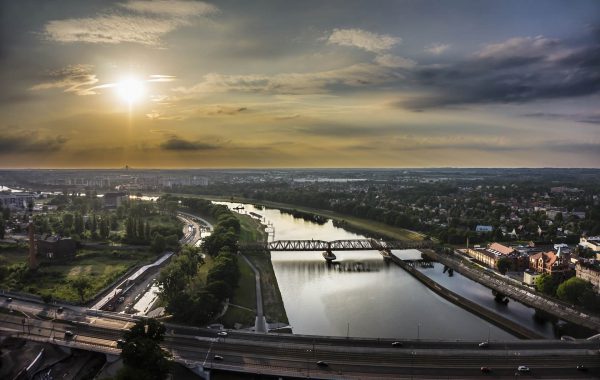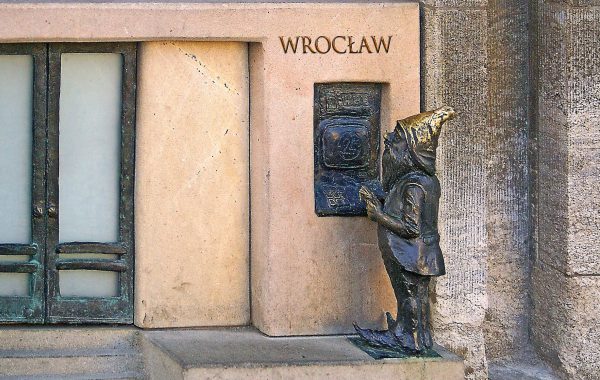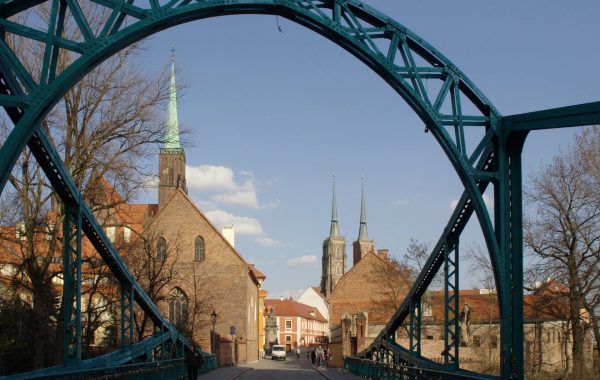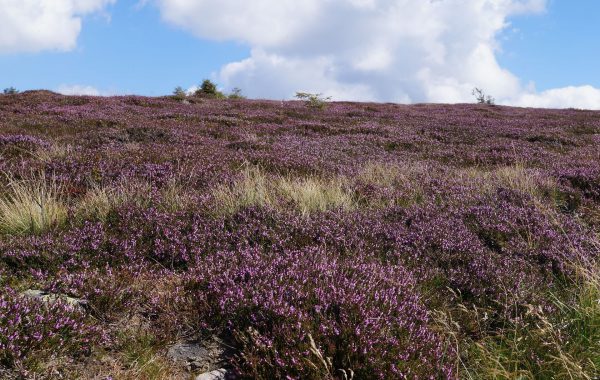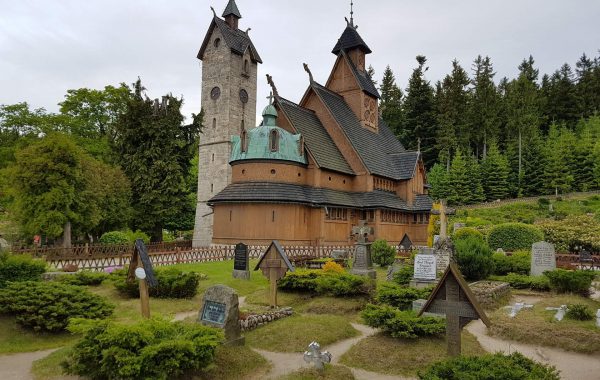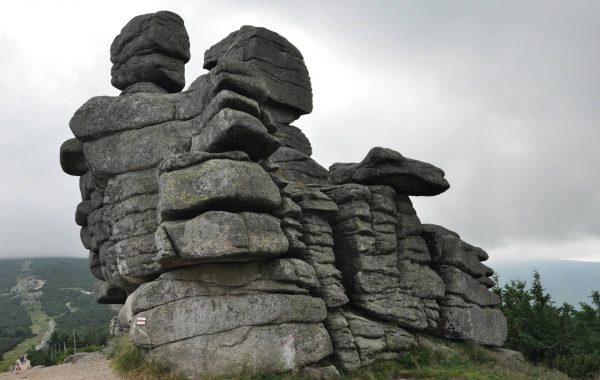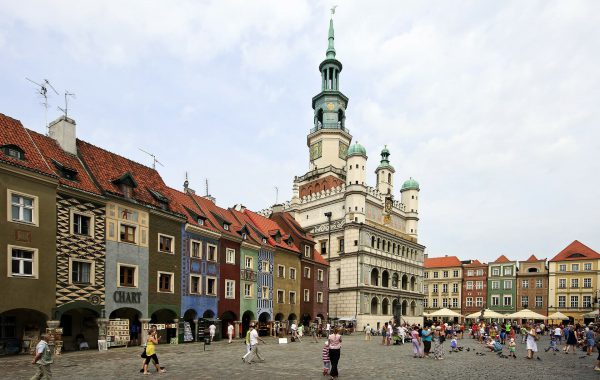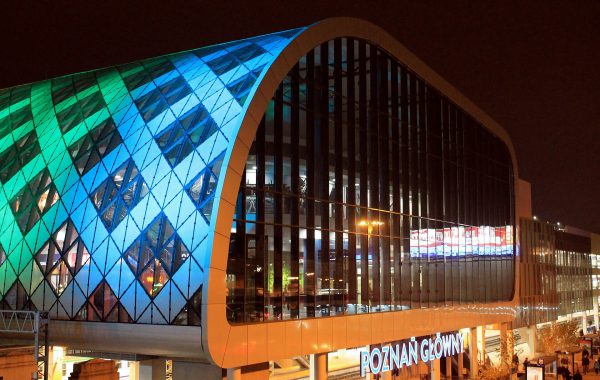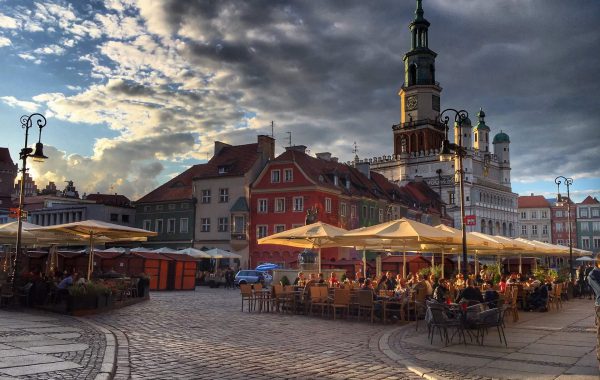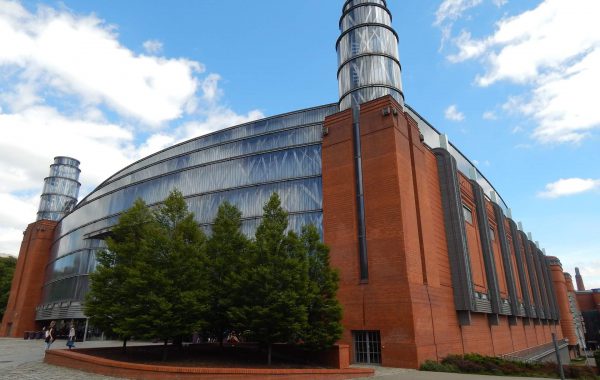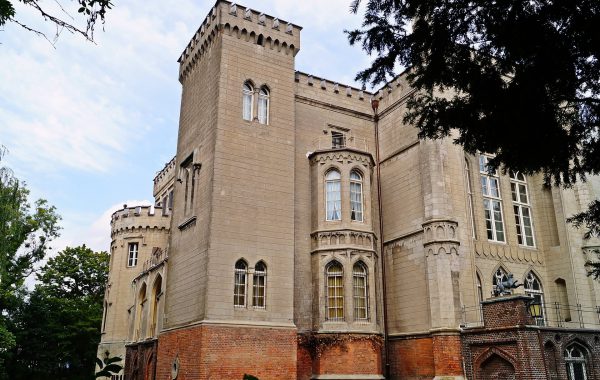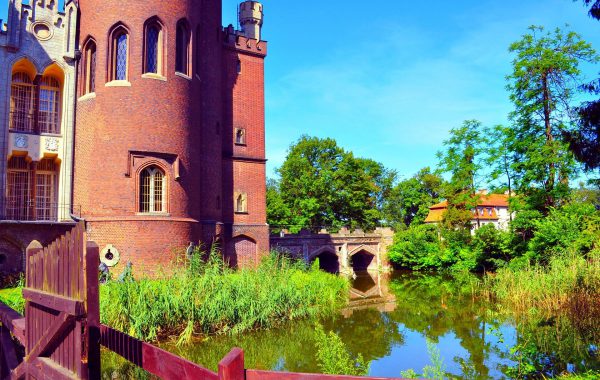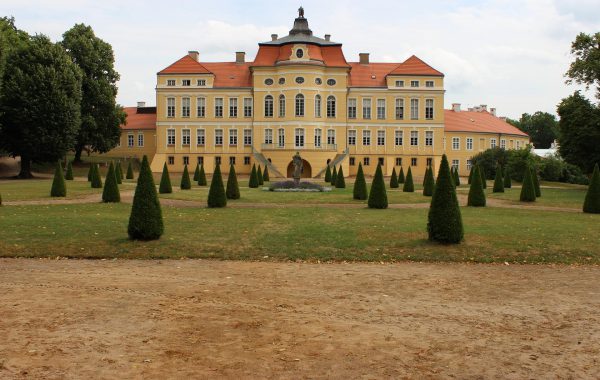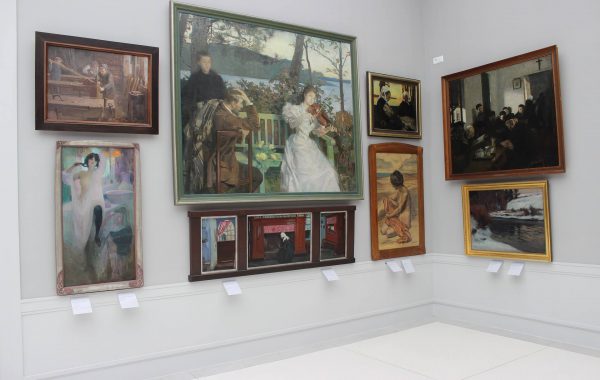Destinations
Kraków
Krakow is rightly considered to be a real jewel in this country’s crown. Krakow lies in southern Poland on the banks of the Vistula, queen of Polish rivers, and is one of Poland’s most ancient cities. Krakow is Poland’s former capital and it’s popularity is reflected in growing visitor numbers from around the world.
The city is filled with monuments and places to visit. It therefore needs more then just one day to experience all of the emotions it can evoke.
Its particular atmosphere have inspired and is still inspiring intellectuals, artists and writers. Those who visit this exceptional town fall in love with it and they leave longing to return.
The richness of cultural and artistic life contributes to this fascination as much as the genuine character of its old streets and little squares lined with restaurants or coffee shops serving local delicacies, and quaint boutiques selling local merchandise.
Many consider Krakow an undisputed architectural gem of Central Europe. This city was influenced by the Italian Renaissance with it’s citadel cities on one hand and Viennese secessionist on the other. The two are combined in an unforgettable blend of styles. With it’s spires, cobbled streets, pavement cafes, candlelit bars, accordionists, ad-hoc art exhibitions and the passing hours being marked by the sound of the bugle; it is a city of magic and legends. Many have fallen under its spell.
Copernicus found here his infatuation with the stars, King Casimir the Great fell in love with his Jewish lover Esther and the young Karol Wojtyla said goodbye to his teenage sweetheart to become Pope John Paul II.
A wide range of different types of accommodation, restaurants and an array of eateries make a visit to Krakow a very straightforward and rewarding affair, befitting any taste or budget.
Unsurprisingly so Krakow received the prestigious “The Best European City Trip” award for the third consecutive time in 2016.
What should be seen?
Rynek Główny
Wawel
Royal Route
Kazimierz
Podgórze
Today a district of Kraków, Podgórze lying on the right bank of the Vistula, was an independent borough with its own market square, coat-of-arms, and town hall from its founding in 1784 to 1915. Recognised as an industrial town, it was inhabited by entrepreneurs and craftspeople, on the other hand it boasted rich nature and wildlife and picturesque scenery. During the second world war, it was witness to the tragedy of the Jews, as 15 000 people were locked up in the ghetto the Nazis set up here.
Krakow’s fabled Oskar Schindler’s Factory of Enameled Vessels ‘Emalia’ has been turned into a modern museum devoted to the wartime experiences in Krakow under the five-year Nazi occupation during the World War II. The museum takes up the sprawling administration building of the defunct plant at 4 Lipowa street, in the city’s grim industrial district of Zablocie on the right bank of the Wisla river. Ingenious exhibitions combine period artifacts, photos and documents with multimedia and set-piece arrangements in an attempt to create a full-immersion experience
Out of town
Wieliczka
Auschwitz-Birkenau
Pieskowa Skała
Wadowice and Kalwaria Zebrzydowska
Częstochowa
Zakopane
Where to go in particular? Morskie Oko – a beautiful lake surrounded by high mountain peaks; Chochołów – a village where people scrub the outside and inside of their old wooden houses at least twice a year. 35 miles from Zakopane, there is the Pieniny mountain range, the ruins of Czorsztyn castle, and a reservoir in the mountains. One can visit a wooden church from the 15th century with magnificent wall paintings, one of Poland’s best preserved 15th – century castles in Niedzica, and go for rafting along the extremely picturesque Dunajec river gorge (not white water rafting at all, it is, in fact, a rather pleasant and relaxing experience ).
Warsaw
As a modern and a dynamic metropolis Warsaw offers everything that a European capital should.
Being at the junction between Western and Eastern Europe, Warsaw is a perfect dialogue-inspiring springboard between different cultures and destinations.
Warsaw’s history, knowledge and experience inspire tremendous creativity.
The propensity to use this undercurrent is reflected in the events taking place here. They will exceed expectations of every music enthusiast, art pilgrim or history lover.
A monthly calendar consisting of more then 100 cultural happenings attracts international artists and their international audience.
Warsaw would satisfy all tastes thanks to its vibrant cultural life, prolific festivals, art events, museums and modern art exhibitions.
The city is inseparably connected with the childhood and adolescence of Fryderyk Chopin. It is here that the most important events named after him take place – The International Chopin Piano Competition or Chopin and His Europe Festival.
Daily schedules are filled with concerts dedicated to this great romantic composer such as open-air piano recitals in the Royal Łazienki Park.
With green areas covering over a quarter of the city you can be guaranteed that spending a weekend in the capital of Poland will be an unforgettable experience.
The more poignant and turbulent but fascinating part of the history of the city is presented in the Warsaw Rising Museum. Due to its contemporary design this is one of the most recognisable landmarks of Warsaw.
Another avant garde design denotes the Museum of The History of Polish Jews. It renders an insight to the fascinating history of a people who for centuries had constituted an important part of the Polish identity.
What should be seen?
Royal Castle
Old Town Square
Royal Route
Łazienki Królewskie
Wilanów
Out of town
Żelazowa Wola
Łowicz – Arkadia – Nieborów
Treblinka
Kazimierz Dolny
Gdańsk
Gdansk is a very unique town. Other cities may merely aspire to match this exceptional place. Its special location and over a thousand years’ history shaped Gdansk’s distinctive character and give it an implicit and particular recognition among European cities. The city holds its own mystique and its own abundance of mysteries. The spirit of Gdansk makes it impossible to be mistaken for any other place.
Gdansk is synonymous with freedom. Its courage, youthfulness, but first of all its love of freedom is what people of Gdansk have valued and continue to value the most. Its unique “genius loci” has shaped the city and eventually turned it into a symbol city.
This is prevalent not only amongst the Old Town’s patrician houses but also amid the Young City’s shipyard cranes. On beautiful sandy beaches, in its parks, and even in the post-industrial halls and tunnels. Freedom is omnipresent in Gdansk. It is almost tangible and it is the source of inspiration that transformed its people and space.
This modern metropolis is a contemporary thriving centre of science, art, culture, sports and entertainment. The world’s capital city of amber, it attracts visitors from all over. Gdansk’s pride, the famous Stadion Energa, was in the spotlight when Gdansk was one of the host-cities of UEFA EURO. It comes as no surprise, as it is breath taking.
Gdansk inspires and provokes modern art. It stimulates fashion designers’ creativity, inspires artists and architects.
It attracts new and progressive economic thoughts and trends. These attract thousands of business tourists who find that this city is also a thriving conference venue. The new investments such as Lech Walesa Airport, AmberExpo Exhibition and Convention Centre and numerous modern and traditional hotels accommodate all expectations.
Gdansk is the hot spot for the cutting-edge technological innovations, where conference and business meeting participants can make use of the GCBeVENT. This event application is one of Poland’s pioneering solutions and is available for the 4 operating systems – iOS, Android, Windows Phone and Blackberry. The GCBeVENT application being free of charge, will compliment any event, conferences, thought trainings, city games, or convention and make any event offer more attractive. It will also make the organization of any business gathering more efficient and more productive.
Gdansk, is full of buzz and enchantment, and as a recommended destination was listed as one of the top ten must-see tourist hits in the world by the renowned British guidebook publisher – Dorling Kindersley Eyewitness Travel. By the same token The New York Times have listed Gdansk as being one of the world’s forty tourist-friendly cities worthy of a visit.
What should be seen?
Długi Targ
Mariacka Street
Oliwa Cathedral
Westerplatte
The Solidarity Centre ECS
The Museum of the Second World War in Gdańsk
Open in March 2017 . Presenting the narrative of the Second World War in a comprehensive way, the museum will focus specifically on the war’s impact on the everyday life of civilians and soldiers. The choice of Gdańsk as the site of the museum is also significant – not only was it where the war broke out, it was also where Solidarity emerged during the post-war division of the world
Shakespearean Theatre designed by Renato Rizzi
Out of town
Sopot
Szwajcaria Kaszubska
Malbork - Teutonic Castles
Wrocław
Wrocław is the largest metropolis in western Poland. Situated on the banks of Odra River in the Lower Silesian, about 350 kilometres from the shores of the Baltic Sea to the north and 40 kilometres from the slopes of the Sudety Mountains to the south. Wrocław is the main city of the Silesia and Lower Silesia and a historical capital of the region. Located close to the German and Czech borders, it can be admired for its beauty and its unique character enhanced by its surroundings.
The fourth largest city in Poland, Wrocław cumulates over 634,000 inhabitants. The GaWC ranking classified it as a Global city with the high sufficiency in 2014. Mercer consulting ranked Wrocław as « The best city to live in » naming it as a city with growing business in 2015.
The British newspaper “The Guardian” named Wroclaw in it’s top ten places to visit.
Wroclaw is an important caldron of political, economical, scientific, and cultural life in Poland.
At various times of its colourful history the city has been a part of the Kingdom of Poland, Bohemia, Hungary, the Austrian Empire, Prussia and Germany. The wars and battles had been fought for the supremacy over the city. It became part of Poland in 1945, as a result of the border changes after the Second World War.
The city was named the European Capital of Culture in 2016, World Book Capital and was hosting the Theatre Olympics and the European Film Awards in 2016
These titles and events acknowledge the long-term cultural strategy of Wroclaw’s patricians.
The European Capitals of Culture stands out as one of the European Union’s must recognised cultural initiatives. The primary objective of the title is to underline and enhance the richness, individuality and diversity of European cultures all over the Union whilst celebrating their national multiplicity, encouraging a sense of belonging to the European family. Over the years these events have supported a multitude of cities offering social and economic benefits that have increasingly become recognised and appreciated.
Wroclaw’s yearly cultural calendar is dotted with a number of different musical and theatrical events and festivals. The most renown are “Vratislavia Cantans” festival, the “Jazz on the Oder” festival, Wroclaw Non Stop, The Meeting of One-Actor Theatre and Small Theatrical Forms festival, and the International Dialogue Theatre Festival.
It is here in Wroclaw, where avant-garde theatrical projects such as the Pantomima of Henryk Tomaszewski or the Laboratories Theatre of Jerzy Grotowski are presented. The movers and shakers of the world’s theatre scene attend them.
A high density of higher education institutions of which the University and the Polytechnic Institute are most important, makes Wroclaw an important scientific hotspot. The recognition of this potential and the appreciation of Wroclaw’s rapid economic development, prompted companies such as Siemens, LG Phillips, Volvo, Hewlett Packard, Whirpool, Cadbury, Macro Cash & Carry, Castorama, ProLogis, Cargill, Google, UPS, Credit Suisse and in the neighbourhood Toyota and Bosch to invest here and establish a strong footprint in Wroclaw.
What should be seen?
Ostrów Tumski
Panorama Racławicka
Aula Leopoldina
Fountain
Japanese Garden
Centennial Hall
Out of town
Książ
Kłodzko Land
Karkonosze
Poznań
Poznań – the cradle of the Polish state. The first Polan settlements were established in the 10th century and became the capital of the new state. From 968, it was the site of the first bishopric in Poland. The city is the place where Piast Route starts, which links sites connected with the beginnings of Christianity in Poland. There are many historical monuments in Poznań – the cathedral and the Old Town should not be missed. Contemporary Poznań is Poland’s second, after Warsaw, banking and trade centre. International fairs have been organised since 1925, gathering producers and merchants from all over the world.

